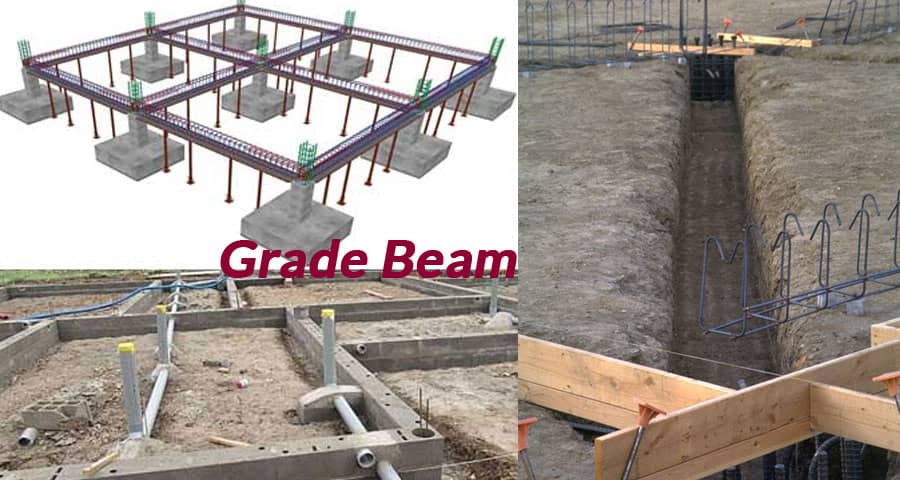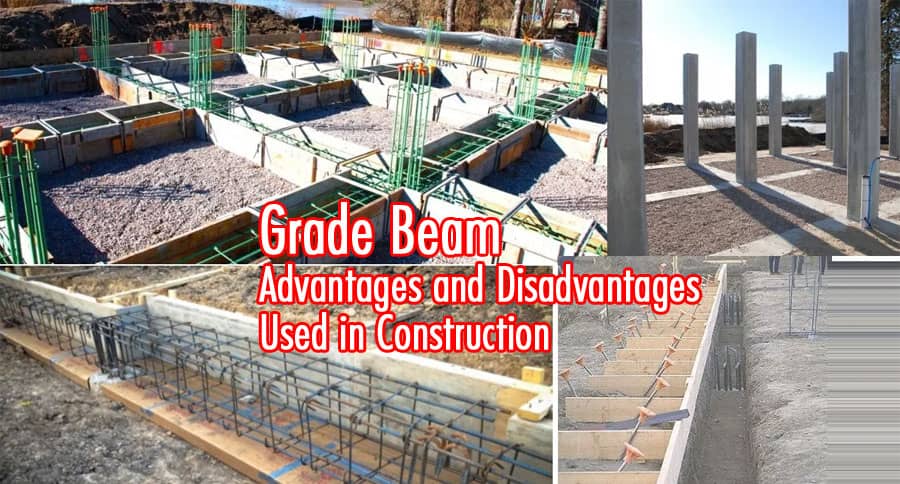Grade Beam | Advantages | Disadvantages | Used In Construction

In the realm of construction and civil engineering, the grade beam is a fundamental structural element that plays a pivotal role in the stability and load-bearing capacity of a building. Whether you're a seasoned builder or a curious homeowner, understanding the ins and outs of grade beams is essential for informed decision-making in construction projects.
What is a Grade Beam?
Grade beams, often referred to as grade beams for foundation or simply "grade beams," are horizontal concrete or reinforced concrete beams that provide structural support to a building's foundation. They are typically situated at or below ground level and act as a crucial link between foundation piles or piers.
The Purpose of Grade Beams
The primary purpose of grade beams is to distribute the load from the structure above to the foundation elements, such as piles or piers, effectively. By doing so, they help prevent differential settlement, which can lead to structural damage over time.
Advantages of Grade Beams
- Enhanced Stability: Grade beams enhance the stability of a structure by evenly distributing the weight of the building to the foundation. This ensures that the structure remains level and reduces the risk of settling or tilting.
- Resistance to Soil Movement: One significant advantage of grade beams is their ability to resist soil movement. They can withstand lateral forces and help prevent soil expansion or contraction from affecting the foundation.
- Versatility in Design: Grade beams come in various shapes and sizes, making them versatile for different construction needs. They can be customized to accommodate specific load-bearing requirements.
- Cost-Efficiency: Compared to more complex foundation systems, grade beams are often a cost-effective choice. They require less excavation and material, reducing overall construction costs.
Disadvantages of Grade Beams
- Limited Load-Bearing Capacity: One of the notable disadvantages of grade beams is their limited load-bearing capacity. They may not be suitable for very heavy structures or buildings with high-rise designs.
- Vulnerability to Moisture: Grade beams can be susceptible to moisture infiltration, which may lead to cracking or deterioration over time. Proper waterproofing is essential to mitigate this issue.
- Soil Conditions: The effectiveness of grade beams largely depends on soil conditions. In areas with unstable or highly expansive soils, additional foundation support may be necessary.
- Maintenance Requirements: Regular inspection and maintenance are crucial for ensuring the long-term integrity of grade beams. Neglecting maintenance can lead to costly repairs.

Why Grade Beam used in construction
Grade beams are used in construction for several important reasons:
- Load Distribution: Grade beams serve as horizontal load-bearing members that distribute the weight of a building evenly to the foundation. This helps prevent differential settlement, ensuring that the structure remains stable and level over time.
- Foundation Support: They provide support to foundation elements, such as piles or piers, by connecting them. This added support is crucial for maintaining the structural integrity of the building.
- Soil Stabilization: Grade beams help stabilize the soil by resisting lateral forces. They prevent soil expansion or contraction from affecting the foundation, which is especially important in areas with varying soil conditions.
- Versatility: These beams come in various shapes and sizes, making them versatile for different construction needs. They can be customized to accommodate specific load-bearing requirements, making them suitable for a wide range of building types.
- Cost-Efficiency: Grade beams are often a cost-effective choice compared to more complex foundation systems. They require less excavation and material, which can reduce overall construction costs.
Conclusion
In summary, grade beams are a vital component of many construction projects, offering advantages such as enhanced stability, resistance to soil movement, versatility in design, and cost-efficiency. However, they also have limitations, including limited load-bearing capacity, vulnerability to moisture, sensitivity to soil conditions, and maintenance requirements. To determine whether grade beams are the right choice for a specific project, it's essential to consider the site's conditions and structural needs carefully.
FAQs
Are grade beams suitable for all types of buildings?
Grade beams are best suited for low to medium-rise structures. For high-rise buildings, alternative foundation systems may be necessary.
What is the typical lifespan of grade beams?
With proper maintenance, grade beams can last for several decades. However, this can vary depending on factors like soil conditions and climate.
How can I prevent moisture-related issues with grade beams?
Adequate waterproofing measures, such as sealants and drainage systems, can help prevent moisture-related problems.
Do grade beams require regular inspections?
Yes, regular inspections by qualified professionals are essential to identify and address any issues promptly.
Can grade beams be retrofitted or repaired if needed?
Yes, grade beams can often be retrofitted or repaired, but it's crucial to consult with an engineer or contractor for guidance.
Please watch the following short video for Grade Beam in construction
